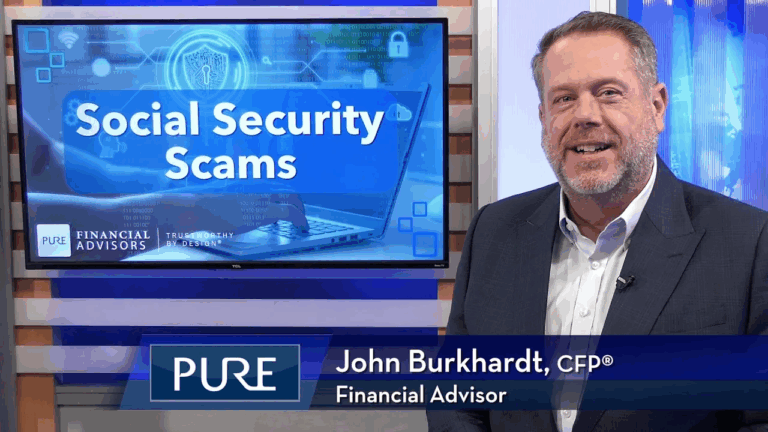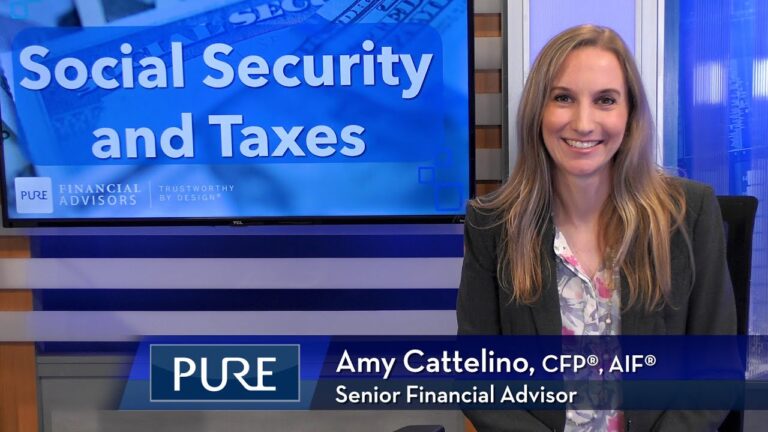Retirement savings and available tax breaks have changed substantially with the SECURE 2.0 Act of 2022. It’s part of the $1.7 trillion omnibus budget bill that became law in December 2022, and it contains about 100 different provisions that may affect you. Amanda Cook, CPA, Tax Planning Manager at Pure Financial Advisors, provides a very high-level overview of some of the most immediate changes that will impact savers and investors, employers and employees, self-employed and small business owners, including:
- How you save for retirement
- Roth conversions and Roth contributions in your Roth IRA, Roth 401(k), Roth 403(b), and Roth 457
- When you must take required minimum distributions (RMDs) from your retirement accounts
- Penalties for not taking your RMD
- Early withdrawal penalties
- How you make charitable donations
- Which tax credits apply to your tax bill
- Emergency savings options
FREE GUIDE | SECURE Act 2.0 Guide
Transcript:
Retirement savings and tax breaks are changing substantially with the Secure 2.0 Act of 2022.
It’s part of the 1.7 trillion-dollar budget bill that just became law, and it’s got about 100 different provisions that affect retirement and taxes. We’re going to do a very high-level overview of some of the most immediate changes that will impact savers and investors, employers, and employees:
- First, regarding distributions, RMD age has changed for those who are not already at least 72: for those born between 1951 and 1959, required minimum distributions begin at age 73. For those born 1960 and later, RMDs begin at 75. The penalty is now reduced from an enormous 50% to just 25% of your RMD and can be as low as 10%, if corrected.
- There are new exceptions to the 10% early withdrawal penalty before age 59 and a half for terminal illness, survivors of domestic abuse, and corrective distributions of excess contributions and earnings. Eventually, you will also be able to make penalty-free early withdrawals for long term care premiums, up to $2,500 per year.
- The annual limits for qualified charitable distributions are now indexed to inflation, and you can make a one-time $50,000 charitable distribution via split interest gifts.
- For employers, employees, and self-employed people who are still saving for retirement, there are more Roth options than ever! Employer match dollars for retirement plan contributions can now go into Roth 401(k)s, 403(b)s or 457s. The match will be immediately vested, and the employee will foot the tax bill for the contribution. Employees can now make Roth contributions to Simple and SEP IRAs.
Additional retirement savings incentives include:
- If you file Schedule C, start a solo 401k plan any time before your tax return date, and it will be eligible for 2023 employee contributions.
- New small businesses with up to 50 employees can receive a 100% credit for startup costs, this is also available for new employers joining a multiple employer plan or a MEP.
- Small employers will get a new credit of up to $500 per for making military spouse employees immediately eligible for retirement plans. This credit applies for up to three years for non-highly compensated employees.
- Employers can now offer gift cards to encourage employees to save for retirement.
Beyond the changes taking effect now, SECURE 2.0 modifies retirement saving in 2024 and beyond:
- Roth 401(k)s and Roth 403(b)s will no longer have required minimum distributions.
- Surviving spouses will be able to elect to be treated as the employee, which could reduce the RMD amount.
- IRA catch-up contributions for savers age 50 and over will be indexed to inflation, rather than just being a flat $1,000 catch up.
- In 2025, catch-up contributions for employees ages 60 through 63 will be increased to at least $10,000. For highly compensated employees, catch-up contributions will be required to be Roth contributions beginning in 2024.
- Employers will be allowed to match student loan payments into 401(k)s, 403(b)s, simple IRAs and 457 plans if they choose to do so, which would allow savers to still receive an employer match if they pay off student loans instead of contributing to their 401(k).
- Employers can automatically opt non-highly compensated employees into new pension-linked emergency savings accounts with up to 3% of their pay, with the first $2500 acting as an emergency fund.
- You’ll also be able to take emergency withdrawals of up to $1,000 from your 401(k) or IRA without penalty.
- In 2025, we’ll see automatic enrollment and automatic annual increased contributions in new 401(k)s and 403(b)s, but employees will be able to opt out.
With nearly 100 changes in place and on the way, now is the time to adjust your financial plan accordingly. Make sure you’re taking advantage of any new retirement reforms and tax breaks that impact you, your family, and your future. Schedule a free assessment with one of the experienced financial professionals at Pure Financial Advisors now.
Subscribe to our YouTube channel.
IMPORTANT DISCLOSURES:
• Neither Pure Financial Advisors nor the presenter is affiliated or endorsed by the Internal Revenue Service (IRS) or affiliated with the United States government or any other governmental agency.
• This material is for information purposes only and is not intended as tax, legal, or investment recommendations.
• Consult your tax advisor for guidance. Tax laws and regulations are complex and subject to change.
• Investment Advisory and Financial Planning Services are offered through Pure Financial Advisors, LLC an SEC Registered Investment Advisor.
• All information is believed to be from reliable sources; however, we make no representation as to its completeness or accuracy.
CPA – Certified Public Accountant is a license set by the American Institute of Certified Public Accountants and administered by the National Association of State Boards of Accountancy. Eligibility to sit for the Uniform CPA Exam is determined by individual State Boards of Accountancy. Typically, the requirement is a U.S. bachelor’s degree which includes a minimum number of qualifying credit hours in accounting and business administration with an additional one-year study. All CPA candidates must pass the Uniform CPA Examination to qualify for a CPA certificate and license (i.e., permit to practice) to practice public accounting. CPAs are required to take continuing education courses to renew their license, and most states require CPAs to complete an ethics course during every renewal period.












